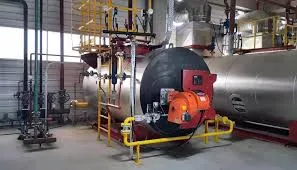سبتمبر . 14, 2024 03:30 Back to list
high quality sand castings
High-Quality Sand Castings The Key to Precision Engineering
Sand casting, one of the oldest and most versatile casting processes in the metalworking industry, remains a critical technique in manufacturing high-quality components for various applications. This method, characterized by its affordability, flexibility, and capacity to produce complex geometries, has proven itself indispensable in sectors ranging from automotive to aerospace. The quality of sand castings is essential, as it directly impacts the performance, durability, and overall success of the final product.
The Sand Casting Process
The sand casting process begins with creating a mold from a mixture of sand and a binding agent, typically clay. The mold captures the required shape of the part to be cast. After the mold is prepared, molten metal is poured into it and allowed to solidify. Once cooled, the sand mold is broken away, and the casting is removed. While this process may sound straightforward, achieving high-quality castings involves numerous variables, including the quality of the sand, the type of metal used, and the precision of the mold.
Factors Affecting Quality
To produce high-quality sand castings, several factors must be meticulously managed
1. Sand Quality The type of sand used greatly affects the casting's surface finish and dimensional accuracy. Fine, well-graded sand provides better surface quality, while coarser sand may lead to imperfections.
2. Mold Design A well-designed mold supports optimal flow of molten metal and minimizes defects. Proper gating systems and venting are imperative to ensure that the metal fills the mold evenly and air escapes without causing trap pockets.
high quality sand castings

3. Melting Temperature The molten metal must be poured at the correct temperature. If the temperature is too low, it can lead to incomplete fills and cold shuts. Conversely, excessively high temperatures can decrease the metal's integrity.
4. Cooling Rate Controlled cooling is necessary to avoid thermal stresses and distortions in the casting. Techniques such as using chills or adjusting mold composition can aid in achieving optimal cooling rates.
5. Post-Processing After removal from the mold, castings often undergo finishing processes such as grinding, machining, or heat treatment to enhance their physical properties and dimensional accuracy.
Applications of High-Quality Sand Castings
High-quality sand castings find applications in a wide array of industries due to their excellent properties. In the automotive industry, they are used to produce engine blocks, transmission cases, and suspension components, where strength and precision are paramount. In aerospace, sand castings are essential for producing frames and other critical components that must withstand extreme conditions while maintaining lightweight characteristics.
Moreover, the versatility of sand casting enables manufacturers to create bespoke components tailored to specific requirements, which is particularly valuable in industries requiring specialized machinery.
Conclusion
The art and science of producing high-quality sand castings lie in meticulous attention to detail throughout the casting process. By carefully managing factors such as sand quality, mold design, and thermal control, manufacturers can ensure that their castings meet the stringent standards required in modern engineering applications. As industries continue to advance, the demand for precision, reliability, and performance in cast components will only grow, solidifying the importance of high-quality sand castings in the manufacturing landscape.
-
Centrifugally Cast Iron Water Main Pipe for Reliable Mains
NewsAug.22,2025
-
Durable Centrifugally Cast Iron Water Main Pipe
NewsAug.11,2025
-
Centrifugally Cast Iron Water Main Pipes for Reliability
NewsAug.10,2025
-
High-Quality Centrifugally Cast Iron Water Main Pipes
NewsAug.09,2025
-
Durable Cast Iron Water Main Pipe & Drainage Solutions
NewsAug.08,2025
-
Buy Cast Iron Pipe: Premium Ductile Iron & Drain Solutions
NewsAug.07,2025


